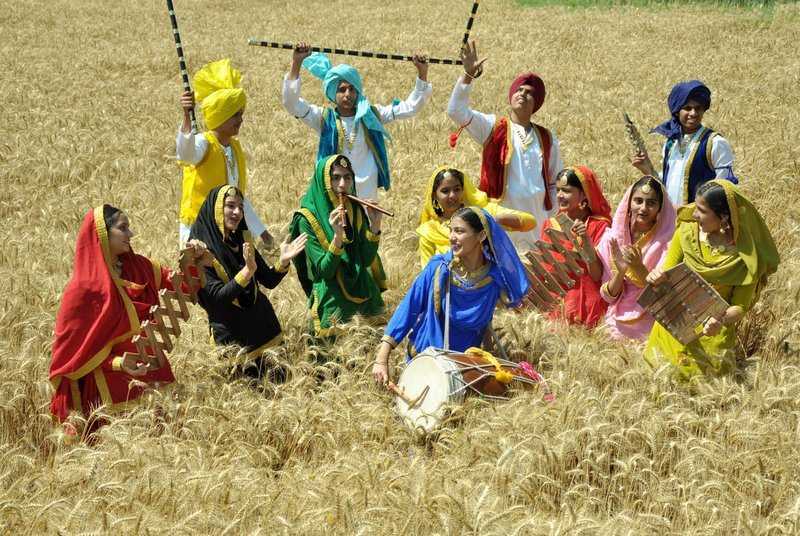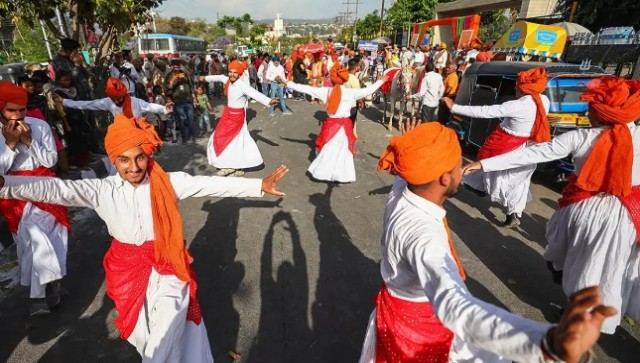"Dream, Dream, Dream! Conduct these dreams into thoughts, and then transform them into action."
- Dr. A. P. J. Abdul Kalam
"Dream, Dream, Dream! Conduct these dreams into thoughts, and then transform them into action."
- Dr. A. P. J. Abdul Kalam
11 Apr 2024
A Symphony of Vibrant Festivities ~
India's springtime is a melody of colorful festivals that honor the earth's wealth, from the sun-drenched shores of the south to the lush plains of the north. With the great Baisakhi celebrations marking the start of a new solar year, the nation is filled with a sense of thanksgiving and rebirth that cascades into the festive celebrations of Puthandu in Tamil Nadu, Vishu in Kerala, and Bihu in Assam. The mesmerizing jumble of spring harvest festivities here is evidence of India's rich cultural legacy, where age-old customs blend with the cycles of the natural world.
History Behind It ~
The religious significance of the Baisakhi celebration dates back to 1699. Guru Gobind Singh, the tenth Sikh Guru, lay the groundwork for Panth Khalsa. For this reason, the Khalsa Sirjana Divas is also observed on this day. Sikhs celebrate the traditional New Year on Baisakhi. The ninth Sikh Guru, Guru Teg Bahadur, was publicly killed by the Mughal Emperor Aurungzeb and became a martyr. This is how the narrative of Baisakhi originated. When the Aurungzeb sought to introduce Islam into India, the valiant Guru Tegh Bahadur defended the rights of Sikhs and Hindus.
Baishakhi: Chasing the Bloom All Around ~

Music & Happiness Blending ~
(Source: Google Images)

It's A Celebration of Sweat and Perseverance Meeting Together~
(Source: Google Images)
Known as Baisakhi, India celebrates the arrival of spring with a big festival as the sun warms the ground and the fields bloom with fresh life. This celebration, which is mostly observed in the country's north, heralds the start of the harvest season and the new solar year. In addition to being a significant agricultural milestone, Baisakhi is also a time for communal gathering and spiritual rejuvenation.
The celebrations start with people bathing in a holy river and going to Gurudwaras, chief of which are the Golden Temple in Amritsar, the Gurudwara at Anandpur Sahib, where Khalsa was born, and Talwandi Sabo, where Guru Gobind Singh recompiled the sacred Guru Granth Sahib. After the prayers, people delve into merriment and dance and sing. The popular phrase 'JattaAayi Baisakhi' is proclaimed loudly in neighborhoods as gleeful farmers celebrate a bountiful harvest. Feasts are an integral part of the festival and the traditional Karah Prasad (a concoction prepared with wheat, clarified butter, and sugar) is a special delicacy. People congregate for lunch at the guru-ka-langur or community kitchen at the Gurudwaras and after a shared meal, take out grand processions of Nagar Kirtan, in which devotional songs are played. One of the most charming aspects of Baisakhi is the vibrant parade called the Vaisakhi Nagar Kirtan. Sikh devotees assemble in a magnificent procession, carrying the Guru Granth Sahib—the holy text of Sikhism—and reciting devotional hymns. They're wearing their best traditional attire. The streets come to life with the melodious sounds of kirtan music, the joyful mood of the attendees, and the steady beating of the dhol drums. This annual celebration shows India's rich cultural past, where agricultural and religious traditions coexist, and is a stunning demonstration of unity and dedication.
1. Traditional Dances ~
A big part of the Baisakhi celebration is the Giddha and Bhangra. Both are traditional Punjabi folk dances that the people perform.
2. Origination ~
The folk dance Bhangra is said to have emanated from Baisakhi itself as a harvest dance to commemorate the gifts and blessings received from Mother Earth.
3. Tribute ~
Giddha is performed by the women, derived from the ring dance, to show the elegance of the womenfolk while still matching the energy and sheer power of the Bhangra.
4. Fun and Fair ~
You can find various colorful fairs at several places during the Baisakhi, where people come to celebrate the festival.
Guru Gobind Singh, the tenth Sikh Guru, established the Khalsa on Vaisakhi day in 1699 at Anandpur Sahib. In a transformative ceremony, he baptized the Panj Pyare (Five Beloved Ones) with Amrit (sweetened water) and initiated them into the Khalsa order. The Khalsa, characterized by the Five Ks (distinctive articles of faith), embodies Sikh virtues of courage, equality, and devotion to the Guru. Guru Gobind Singh's creation of the Khalsa marked a pivotal moment in Sikh history, empowering Sikhs to stand against oppression, defend righteousness, and preserve Sikh identity and values. The Khalsa continues to embody these principles, serving as a symbol to Guru Gobind Singh's enduring legacy of fearlessness and unity.
)
Baisakshi~ Many Names But Similiar Vibe ~
(Source: Google Images)
Addressing The Blunder ~ Is It Vaisakhi or Baisakhi?
1. Vaisakhi is another pronunciation of Baisakhi.
2. The meanings of the two terms are identical and do not significantly differ.
3. In Prakrit and Apbhramsa, the sounds "va" and "ba" are identical. Thus, Vaisakhi or Baisakhi got its name.
May your life be as vibrant and joyful as the blossoming flowers of spring on this auspicious day. Wishing every reader a blessed Baisakhi filled with gratitude, humility, and spiritual enlightenment!